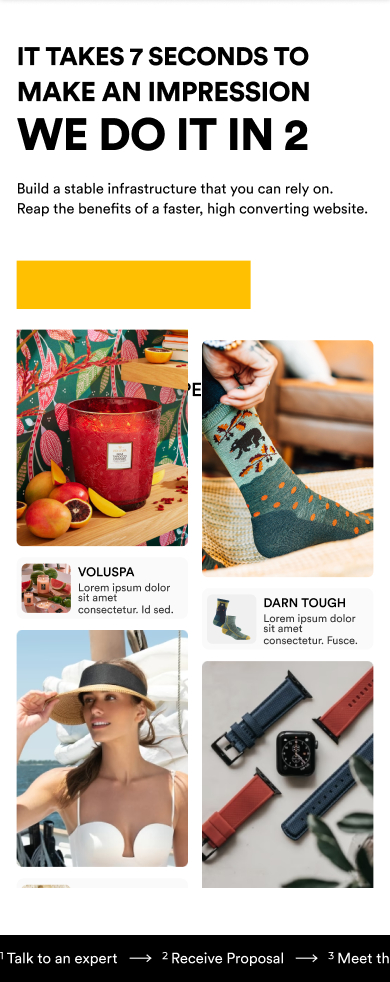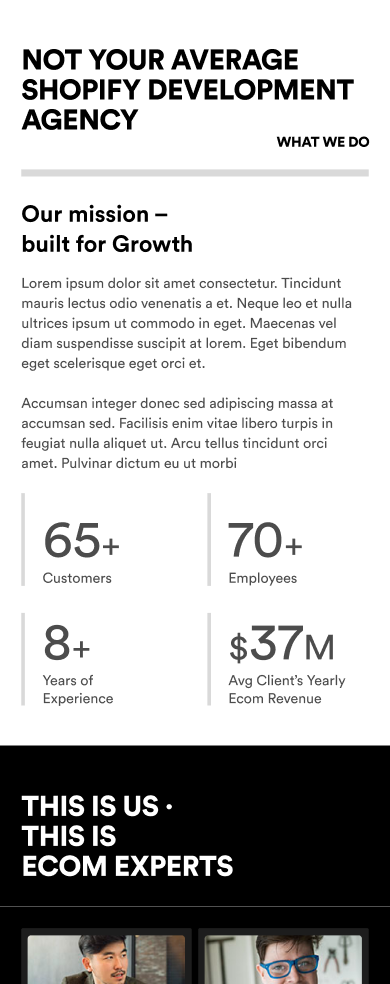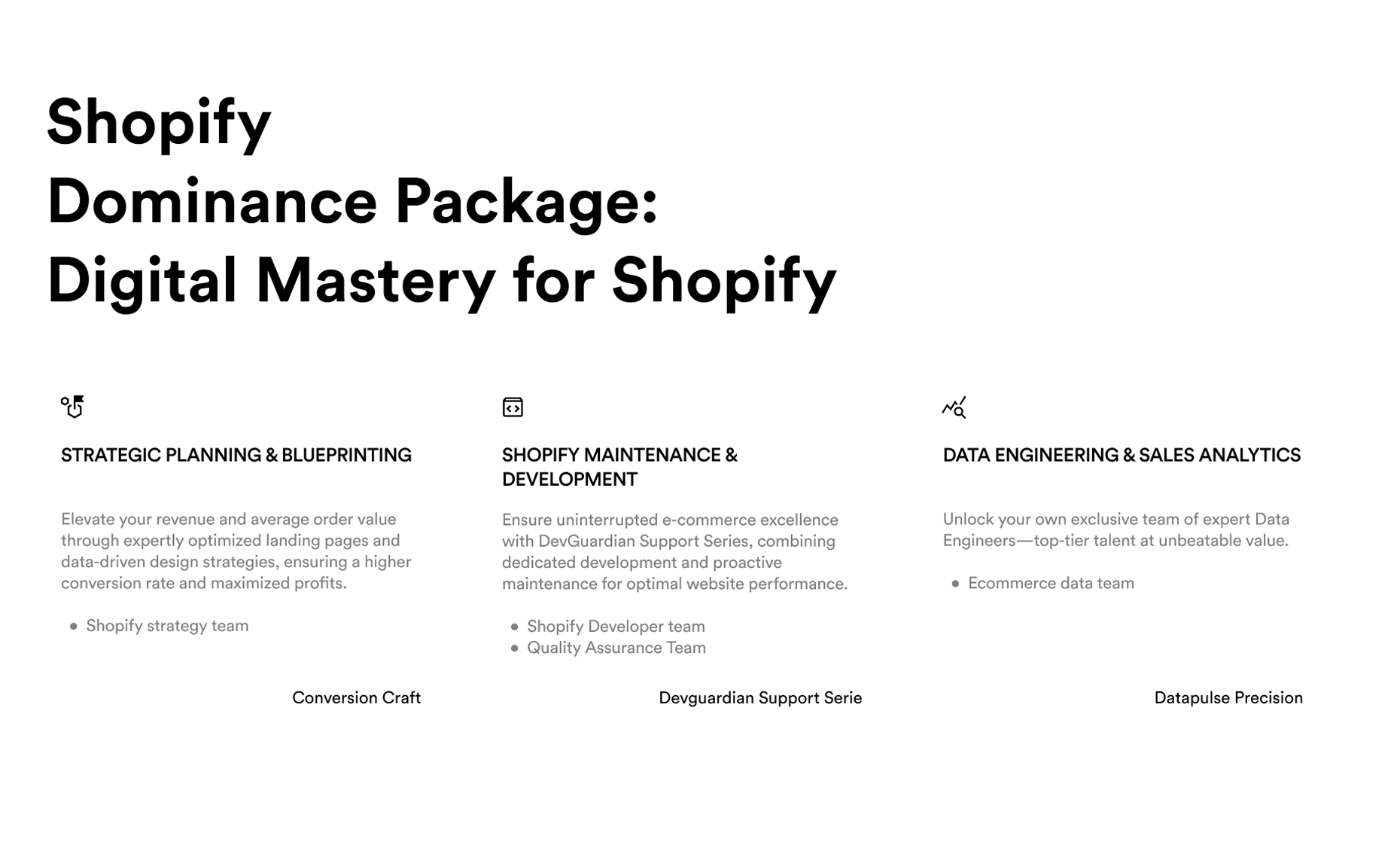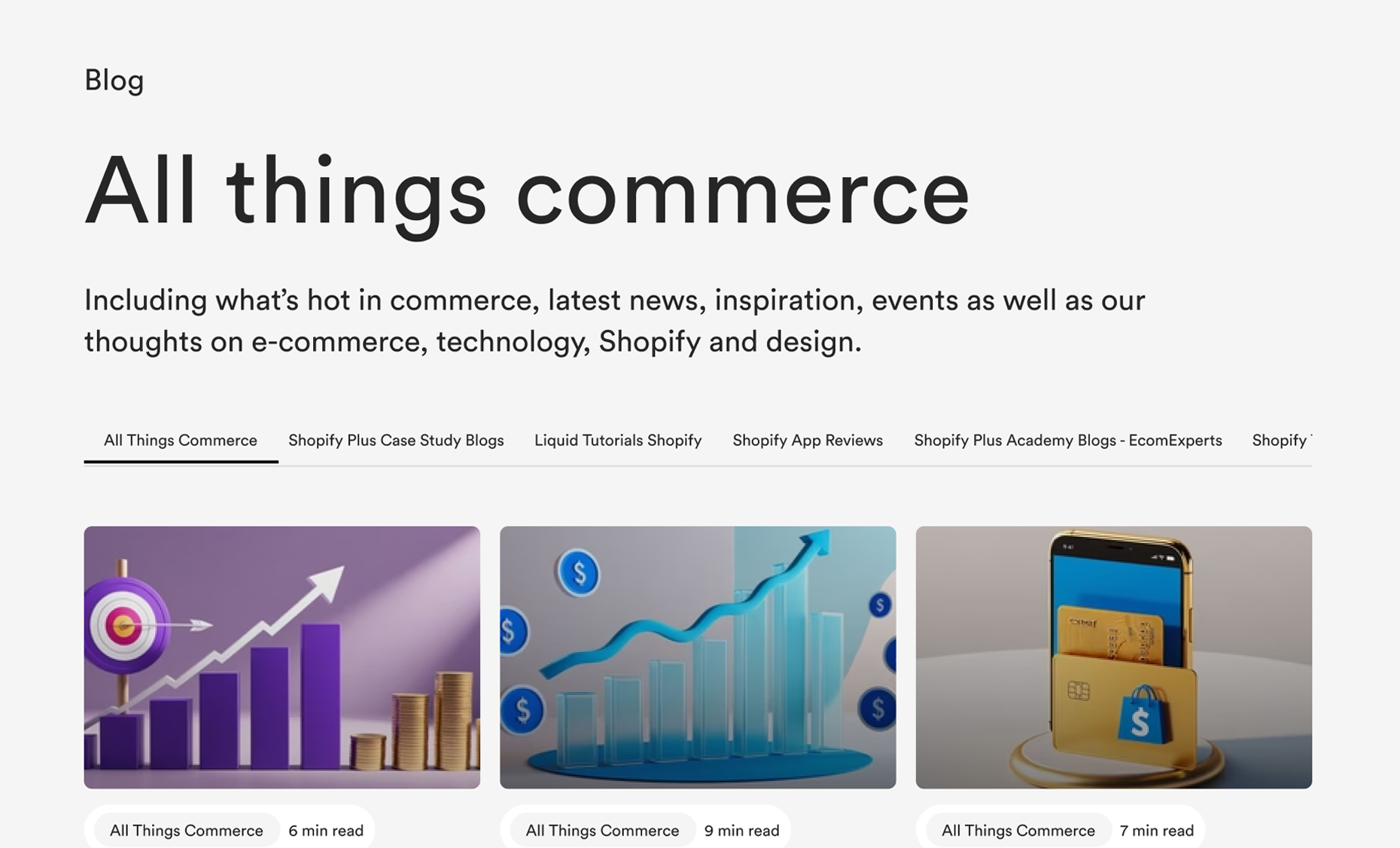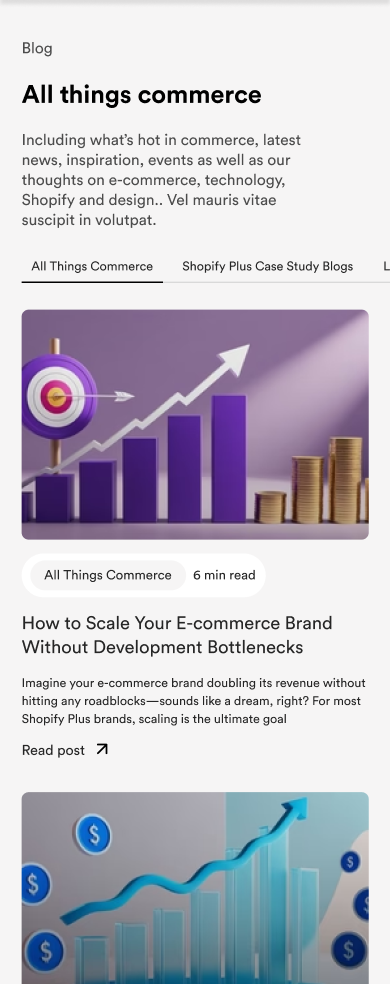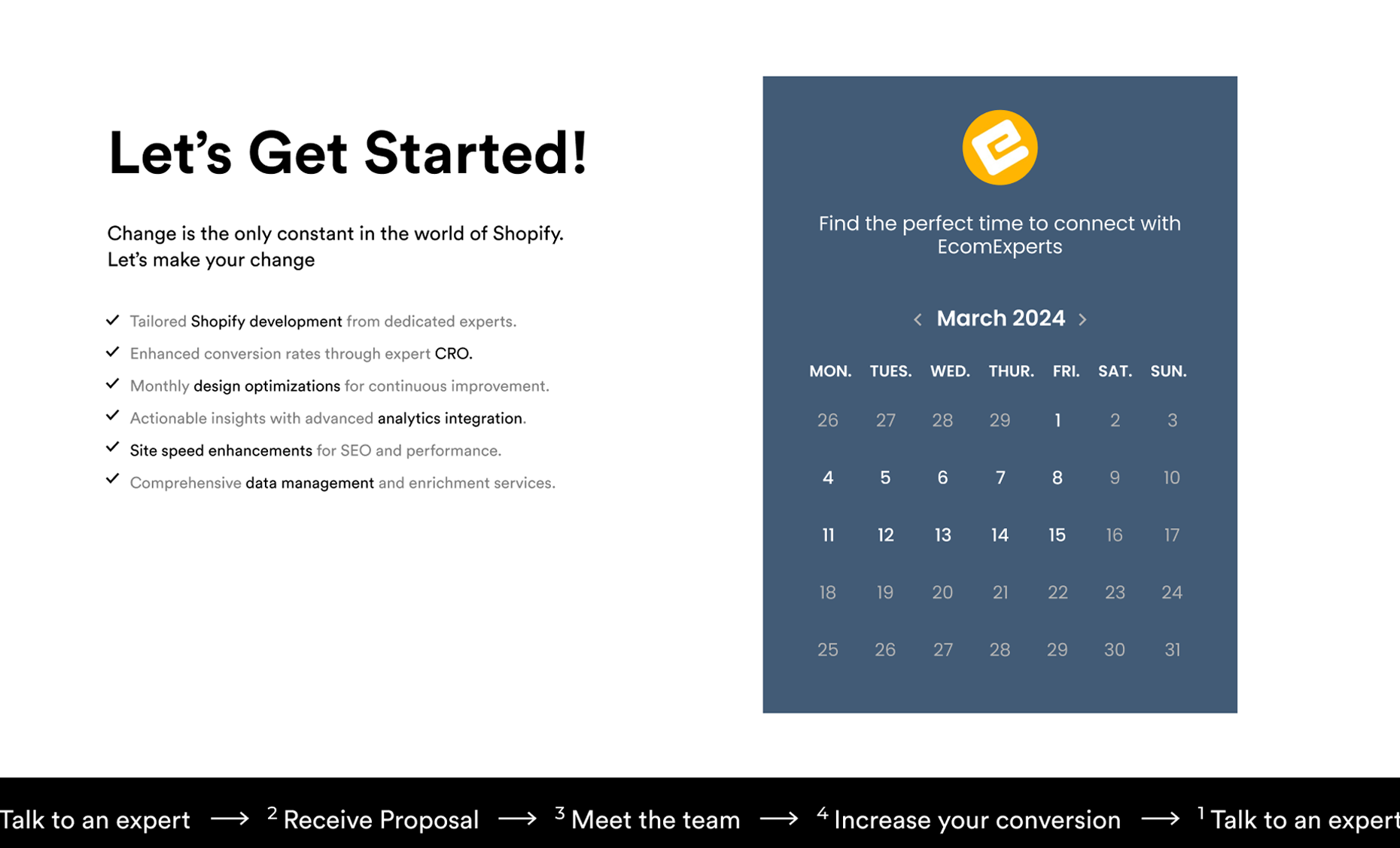Introduction
Let’s cut to the chase—speed kills in e-commerce, but not in the way you think.
In this game, speed is your best friend. You’ve got mere seconds to make a lasting impression, and if your Shopify store is dragging its feet, you’re basically inviting your customers to head straight for the exit.
Here’s the hard truth: every extra second your site takes to load is a potential sale slipping through your fingers. And I’m not just talking a small dip in sales; we’re talking up to a 7% drop in conversions for every second delay. In a world where customer expectations are through the roof, your store’s performance isn’t just a technical issue—it’s your bottom line on the line.
Overview of Common Shopify Performance Issues
Now, Shopify is one of the best platforms out there, hands down. But even the best can have some cracks in the foundation if not managed properly. We’re talking slow load times, clunky mobile experiences, checkout processes that make you want to pull your hair out—these are the kinds of issues that can tank your store’s success.
And let’s not forget, Google’s got its eye on you too. Poor performance can knock you down in the search rankings, making it even harder for customers to find you in the first place.
Blog Overview
In this blog, we’re going to take a deep dive into the most common performance issues Shopify store owners face and, more importantly, how to fix them. We’ll kick things off by talking about why performance is the backbone of your e-commerce success. Then we’ll break down the biggest problems that are holding your store back.
But we’re not just here to point out problems—we’re here to solve them. We’ll show you the tools and techniques you need to diagnose and fix these issues, step by step. By the end of this guide, you’ll have the playbook you need to keep your Shopify store running at peak performance.
Ready? Let’s do this!
The Importance of Performance in E-commerce
How Performance Impacts UX, SEO, and Sales
Let’s get real—if your Shopify store isn’t performing at its best, you’re leaving money on the table. In e-commerce, performance is everything. Think of your site’s speed and responsiveness as the customer service of your online store. Just like in a brick-and-mortar shop, if a customer has to wait too long, they’re going to bounce. Literally. The connection between performance and user experience is undeniable.
If your pages take more than a few seconds to load, visitors start to lose interest, and guess what? They’re not coming back. In fact, 40% of consumers will abandon a website that takes more than three seconds to load. That's like having four out of every ten potential customers walking out before they even see what you’re offering. Not cool, right?
But it doesn’t stop there. Google is all about user experience too, and they’ve baked that right into their ranking algorithms. Poor performance, especially slow page load times, can sink your SEO efforts faster than you can say “bounce rate.”
Google’s Core Web Vitals—metrics like Largest Contentful Paint (LCP), Cumulative Layout Shift (CLS), and Interaction to Next Paint (INP)—are key factors in how they rank your site. If you’re not hitting the marks here, you’re going to see your rankings drop, and with that, your organic traffic and sales.
Key Metrics to Monitor
So, what should you be keeping an eye on? Let’s break down the metrics that matter:
- Page Load Time: This is the big one. If your page isn’t fully loading in under three seconds, you’re already behind. Every millisecond counts here, especially as customers become less patient and more demanding.
-
Core Web Vitals: Google’s Core Web Vitals focus on three main areas:
- Largest Contentful Paint (LCP): Measures loading performance. Ideally, LCP should occur within 2.5 seconds of when the page first starts loading.
- Cumulative Layout Shift (CLS): Measures visual stability. Aim for a CLS of less than 0.1.
- Interaction to Next Paint (INP): This measures the responsiveness of your site, i.e., how quickly it reacts to user inputs. A good INP score should be under 100 milliseconds.
- Bounce Rate: This metric tells you how many people are leaving your site after viewing just one page. A high bounce rate can be a signal that your page is either taking too long to load or not engaging enough to keep visitors interested.
How Poor Performance Can Affect a Shopify Store’s Success
Let’s talk real-world scenarios. Imagine you’ve got a Shopify store selling high-end tech gadgets. Your products are top-notch, your prices are competitive, but your site takes five seconds to load.
During that five seconds, your potential customers have already clicked back to Google and moved on to one of your competitors. It’s not just a hypothetical—it’s happening every day.
Take Macy’s as a cautionary tale. A few years back, they experienced a major slow down on their website during Black Friday, which led to a significant drop in sales.
And they’re not alone—Amazon reported that just a one-second delay in page load could cost them $1.6 billion in sales each year. If giants like Amazon and Macy’s can suffer from slow performance, imagine what it could do to a smaller Shopify store.
On the flip side, stores that prioritize performance see massive gains. Walmart found that for every one-second improvement in page load time, conversions increased by 2%. That’s the kind of lift that can make or break a quarter, especially during peak shopping seasons.
Bottom line: Performance isn’t just a tech issue; it’s a business issue. It impacts your bottom line in a big way, from SEO to sales to overall user satisfaction. If your store isn’t performing at its best, you’re not just losing customers—you’re losing revenue.
Common Performance Issues on Shopify
Slow Page Load Times
Alright, let’s get into one of the biggest killers of e-commerce success—slow page load times. It’s like showing up to a party late, and everyone’s already left. In the world of e-commerce, that “everyone” is your potential customers. If your Shopify store takes too long to load, you’re losing them before they even get a chance to see what you’re offering. But what’s causing these delays?
One of the main culprits is unoptimized images. High-resolution images are crucial for showcasing products, but if they’re not optimized for the web, they can significantly slow down your site. Another issue is excessive use of apps and plugins.
While these tools add functionality, too many of them can bog down your site’s performance. And let’s not forget about render-blocking JavaScript and CSS—these can prevent your page from loading quickly, leaving your customers staring at a blank screen.
The effects? Well, studies show that even a one-second delay can result in a 7% reduction in conversions. That’s real money left on the table. And it’s not just about losing a sale; slow load times can also hurt your SEO rankings, making it even harder for customers to find you in the first place.
High Bounce Rates
Bounce rate is a fancy way of saying “How fast did your potential customers leave?” High bounce rates are a symptom of deeper performance issues. When users land on your site, they expect things to work seamlessly. If your page takes too long to load, or if the design isn’t engaging, they’re gone—no second chances.
A high bounce rate can also indicate that your site isn’t meeting user expectations. Maybe the content doesn’t match what they were looking for, or perhaps the navigation is confusing. Whatever the reason, once they bounce, they’re unlikely to return. And Google notices—high bounce rates can hurt your SEO, making it harder to attract new visitors.
Issues with Mobile Responsiveness
Mobile is no longer just a part of the shopping experience; for many, it’s the whole game. With over half of e-commerce traffic coming from mobile devices, if your Shopify store isn’t optimized for mobile, you’re losing out—big time. Mobile users are especially sensitive to performance issues. If your site isn’t responsive, meaning it doesn’t adjust to different screen sizes, users will have a hard time navigating and interacting with your content.
Slow load times, difficult navigation, and poor design on mobile lead to frustration, and frustrated users don’t stick around. In fact, Google’s mobile-first indexing means that your mobile site performance now directly affects your overall search ranking. So, if your mobile experience isn’t up to par, it’s not just mobile traffic you’re losing—it’s all traffic.
Fixing Your Shopify Store’s Checkout Process
You’ve done all the hard work—got the customer to your site, they’ve browsed, added items to their cart, and then… they leave. Cart abandonment is the bane of every e-commerce store, and performance issues are often to blame. A sluggish checkout process can cause customers to second-guess their purchase, especially if they’re faced with loading delays between steps.
Complex and lengthy checkout processes are another major issue. Every extra step in the checkout process increases the likelihood that the customer will abandon their cart. Performance issues during this critical stage can make a customer question whether they trust your site with their payment information. And in e-commerce, trust is everything.
By addressing these common performance issues, you’re not just improving your store’s functionality—you’re directly boosting your bottom line. In the next section, we’ll dive into actionable steps you can take to tackle these problems head-on and keep your Shopify store running smoothly.
Diagnosing Performance Issues
Alright, so you’re fired up and ready to make your Shopify store a performance beast. But before you can fix the issues, you’ve got to diagnose them. It’s like going to the doctor—if you don’t know what’s wrong, how can you get better? Let’s get into the nitty-gritty of diagnosing performance issues in your Shopify store, so you can stop leaving money on the table.
Tools and Techniques for Diagnosing Issues
First off, let’s talk tools. You wouldn’t build a house without the right tools, and the same goes for optimizing your Shopify store. Thankfully, we’ve got some powerful tools at our disposal that make diagnosing these issues easier than ever.
Shopify’s Built-In Analytics:
Shopify gives you some fantastic built-in analytics to get started. You’ve got your basic performance metrics like site speed and bounce rate right at your fingertips. It’s not just about looking at the numbers—it's about understanding the story they tell.
A high bounce rate? That’s your customers voting with their feet, telling you something’s wrong. Maybe your pages are loading too slow, or maybe the user experience is clunky. Dive into these metrics and start asking the tough questions.
Third-Party Tools: Google PageSpeed Insights, GTmetrix, and Lighthouse:
Let’s take it up a notch with some third-party tools. Google PageSpeed Insights is your go-to for understanding how Google sees your site’s performance. This tool gives you a detailed breakdown of what’s working and what’s slowing you down. And the best part? It prioritizes issues, so you know what to fix first.
GTmetrix is another powerhouse in your toolkit. This one’s all about giving you a deeper dive into your site’s speed and performance. It’s like having an MRI for your Shopify store—GTmetrix doesn’t just tell you there’s a problem, it shows you exactly where the blockages are.
And don’t sleep on Lighthouse—Google’s open-source tool that gives you an in-depth analysis on performance, accessibility, SEO, and more. This tool is especially useful if you’re looking to go deep into the technical aspects of your site.
How to Interpret Data and Identify the Root Causes of Performance Problems
Alright, so you’ve got all this data—now what? Data without action is just noise. You’ve got to interpret it, make sense of it, and then, most importantly, act on it.
Understanding Your Page Load Time:
Start with the basics—page load time. If your site takes more than three seconds to load, you’re losing customers. PageSpeed Insights will show you exactly which elements are dragging down your speed. Maybe it’s those huge image files, or maybe you’ve got too many JavaScript elements that are slowing things down. Whatever it is, this is your starting point.
Analyzing Core Web Vitals:
Google’s Core Web Vitals—Largest Contentful Paint (LCP), First Input Delay (FID), and Cumulative Layout Shift (CLS)—are the new holy grail of performance metrics. LCP is all about how long it takes the main content of your page to load—get this wrong, and your customers are bouncing.
FID measures how long it takes for your site to respond to the first user interaction—if there’s a delay, you’ve got frustrated customers on your hands. CLS looks at how stable your page is as it loads. Nothing screams unprofessional like a page that jumps around while loading.
Identifying Mobile Issues:
Don’t forget mobile. If your site isn’t optimized for mobile, you’re dead in the water. GTmetrix and Lighthouse both offer mobile-specific insights. Check how your site performs on different devices—because if your mobile experience is slow or clunky, you’re losing out on a massive chunk of your potential market.
Pinpointing the Root Causes:
Once you’ve identified the issues, dig into the root causes. Is it oversized images? Too many HTTP requests? Unnecessary third-party scripts? Figure out where the bottlenecks are and prioritize them. Not everything has to be fixed at once, but start with the changes that’ll give you the biggest bang for your buck.
Real-World Examples to Keep in Mind:
Here’s where you see the impact of these issues in the real world. Imagine a store with a killer product lineup but a slow-loading homepage—customers won’t stick around long enough to see what you’re offering. Or think about the frustration of trying to click on a link, only to have the page shift right before your eyes because of poor CLS management. These are the problems we’re here to solve, and they’re costing you conversions every single day.
Remember, diagnosing these issues is only half the battle. The real magic happens when you take that data and turn it into action. Fix what’s broken, optimize what’s lagging, and watch your store go from just another e-commerce site to an absolute powerhouse.
Slow Page Load Times
Image Optimization: Best Practices and Tools
One of the biggest culprits for slow page load times is unoptimized images. In the world of e-commerce, every second counts, and if your images are slowing you down, you’re leaving money on the table. Here’s how to fix it:
- Compress Images Without Losing Quality: Use tools like TinyPNG or ImageOptim to compress your images without sacrificing quality. This can drastically reduce the size of your files, making them quicker to load.
- Use the Right File Formats: WebP is your new best friend. It offers superior compression compared to traditional formats like JPEG or PNG, and it’s supported by most modern browsers. Shopify apps like Crush.pics can automate the conversion process for you.
- Implement Lazy Loading: This is a game-changer, especially for image-heavy sites. Lazy loading ensures that images are only loaded as they come into the user’s view, rather than all at once. This speeds up the initial load time, improving the user experience.
Minifying CSS and JavaScript
Your code might be doing more harm than good if it’s bloated. Minifying your CSS and JavaScript files can make a significant difference:
- Remove Unnecessary Characters: Minification involves stripping out all the unnecessary characters from your code—think spaces, commas, and comments. Tools like UglifyJS or CSSNano can handle this automatically.
- Bundle and Compress: By bundling your CSS and JavaScript files, you reduce the number of HTTP requests your store needs to make. Compression tools like Gzip further reduce the size of these files, speeding up load times.
Leveraging Browser Caching and Content Delivery Networks (CDNs)
Let’s talk about how you can make your site faster by getting smarter with your content delivery:
- Browser Caching: This is about storing some elements of your site locally on a visitor’s browser so that when they come back, your site loads faster. You can set caching rules in your .htaccess file or use Shopify’s built-in settings.
- Content Delivery Networks (CDNs): A CDN like Cloudflare or Fastly can distribute your site’s content across multiple servers around the world. This means your site loads faster for visitors, no matter where they are.
High Bounce Rates
Improving First Impressions
Your first impression matters. If your store doesn’t load quickly or doesn’t immediately grab attention, visitors are out. Here’s how to make sure they stick around:
- Fast Loading Times: This can’t be stressed enough. Studies show that a 1-second delay in load time can lead to a 7% reduction in conversions. Everything we’ve covered about optimizing speed plays directly into reducing bounce rates.
- Engaging Content: Your content needs to speak to your audience immediately. This means clear messaging, compelling visuals, and a layout that guides the user smoothly through your site. Consider hiring a professional copywriter or using tools like Hemingway to sharpen your text.
Enhancing Navigation and User Experience
Make it easy for your customers to find what they’re looking for. Good navigation is like a GPS for your site—don’t make your users wander aimlessly.
- Clear Menus and Categories: Your navigation menu should be intuitive. Categories need to be clear, with drop-down menus that help users find products easily. Use Shopify’s built-in features to create a logical hierarchy.
- Search Functionality: Implement a robust search feature that suggests products as users type. Apps like InstantSearch+ can improve search functionality, leading to a better user experience.
Implementing A/B Testing for Continuous Improvement
A/B testing isn’t just for marketers. It’s a powerful tool for improving site performance and user experience:
- Test Different Layouts: Experiment with different page layouts, button placements, and call-to-action texts. Use Shopify’s built-in analytics or tools like Optimizely to track what works best.
- Analyze Results and Iterate: A/B testing is about continuous improvement. Keep refining based on what your audience responds to, and you’ll see lower bounce rates and higher conversions.
Mobile Responsiveness
Ensuring Your Shopify Theme is Mobile-Optimized
With more than half of all web traffic coming from mobile devices, your Shopify store must be mobile-friendly:
- Responsive Design: Start with a responsive theme from Shopify’s theme store. These themes automatically adjust to different screen sizes, ensuring a smooth experience for mobile users.
- Mobile-Specific Adjustments: Sometimes, a theme isn’t enough. You might need to tweak the mobile version of your site, such as simplifying navigation or reducing the number of elements on the screen.
Techniques for Improving Mobile Load Times
Mobile users have even less patience than desktop users. Here’s how to make sure your site loads quickly on mobile devices:
- Compress Images for Mobile: Use smaller image sizes for mobile or even consider serving different images to mobile users. Tools like Responsive Images can help automate this process.
- Minimize Mobile-Only Content: If certain elements don’t add value on mobile, consider hiding them. This could include large hero images or complex animations that slow down the site.
The Importance of AMP (Accelerated Mobile Pages)
AMP is designed to make mobile pages load almost instantly:
- Implementing AMP: Use Shopify apps like FireAMP to convert your pages into AMP. This stripped-down version of your site will load significantly faster on mobile devices.
- Monitoring Performance: Keep an eye on your AMP pages with tools like Google Analytics to see how they’re performing compared to your regular mobile pages.
Checkout Process Optimization
Simplifying the Checkout Process
A complicated checkout process is a conversion killer. Let’s streamline it:
- Reduce Checkout Steps: Shopify offers a one-page checkout, but you can customize it further to reduce the steps required. Use apps like Checkout Complete to optimize this process.
- Autofill and Address Validation: Implement autofill for forms and real-time address validation to speed up the checkout process and reduce errors.
Reducing Cart Abandonment Rates with Performance Tweaks
Cart abandonment is a common issue, but it’s often due to performance problems that can be fixed:
- Exit-Intent Popups: Use exit-intent popups to capture customers who are about to leave without purchasing. Offer a discount or free shipping to incentivize them to complete the purchase.
- Optimize Load Times During Checkout: Ensure that your checkout pages load quickly. Use Shopify’s analytics to monitor performance and make adjustments as needed.
Integrating Fast and Secure Payment Gateways
Finally, let’s talk about the payment gateways:
- Choose Reliable Gateways: Shopify Payments, PayPal, and Stripe are all solid options that are fast, secure, and widely trusted by customers.
- Reduce Payment Friction: Offer multiple payment options, including credit cards, PayPal, and digital wallets like Apple Pay or Google Pay. The easier it is for customers to pay, the more likely they are to complete the purchase.
These solutions are not just about fixing problems; they're about setting your Shopify store up for long-term success. By tackling these performance issues head-on, you’re creating a better user experience, improving your SEO, and ultimately driving more sales.
Best Practices for Maintaining Shopify Performance
Now that you've got your Shopify store running smoothly with all the optimizations, the next step is ensuring that performance doesn't dip over time. E-commerce is dynamic, and what works today might need tweaking tomorrow. Here’s how you keep your store in top shape:
Regular Performance Audits
Why Audits Are Essential
Just like a car needs regular maintenance, your Shopify store needs regular performance audits. These audits help you identify new issues before they become big problems.
- Monthly Checkups: Schedule monthly performance audits using tools like Google PageSpeed Insights or GTmetrix to catch any issues early.
- Seasonal Audits: Before major sales periods like Black Friday or holiday shopping seasons, conduct more intensive audits. This helps you handle traffic spikes without a hitch.
Keeping Your Shopify Store Updated
Stay Current with Shopify’s Updates
Shopify frequently rolls out updates that include new features, security patches, and performance improvements. Staying on top of these updates is crucial for maintaining your store’s performance.
- Automatic Updates: Enable automatic updates for your apps and themes where possible. This ensures you’re always running the latest versions.
- Manual Checks: For more significant updates, do a manual review to ensure they won’t conflict with your current setup. Backup your store before making any major changes.
Monitoring for New Performance Issues
Performance issues can creep up unexpectedly, especially as you add new products, apps, or content to your store.
- Real-Time Monitoring: Use tools like Pingdom or New Relic to monitor your site’s performance in real time. These tools can alert you to slowdowns or downtime immediately, allowing for quick fixes.
- Customer Feedback: Keep an ear to the ground. If customers start complaining about site speed or checkout problems, it’s a sign you need to investigate.
Scaling Your Store
As your Shopify store grows, so will the demands on your site’s infrastructure. Here’s how to scale efficiently:
- Upgrade Hosting Solutions: If you’re expecting significant growth, consider upgrading your hosting solution. Shopify Plus, for instance, offers more robust features and server resources to handle high traffic.
- Optimize Images and Content: As you add more products, continue to optimize images and other media to keep load times fast.
Continuous Learning and Improvement
The world of e-commerce is constantly evolving. Staying informed about the latest trends and technologies is crucial for maintaining top performance.
- E-commerce Conferences and Webinars: Attend industry events to stay ahead of the curve. Events like Shopify Unite or e-commerce Fuel offer valuable insights into the latest in e-commerce.
- Engage with the Shopify Community: Join forums and groups like the Shopify Community or Reddit’s e-commerce threads. These communities can be great resources for troubleshooting and learning from others’ experiences.
By implementing these best practices, you’re not just maintaining your Shopify store; you’re ensuring it’s ready to grow and adapt to the ever-changing e-commerce landscape. This continuous improvement approach keeps your store ahead of the competition and ensures a smooth, fast, and reliable shopping experience for your customers.
Conclusion
We’ve just covered a ton of ground on how to dial in your Shopify store’s performance. And let me tell you—this isn’t just about making a few tweaks here and there.
It’s about setting your store up to crush it in one of the most competitive spaces out there. Speed, efficiency, and a killer user experience aren’t just optional—they’re your ticket to the big leagues.
Key Takeaways
- Performance is Everything: Think about it—if your store doesn’t load fast, you’re already losing the race. Every second counts, and that’s not just a saying; it’s reality in e-commerce.
- Get Your Hands Dirty: Don’t wait around for issues to fix themselves. Use the tools, get in there, and optimize like your business depends on it—because it does.
- Bring in the Experts: If you’re feeling out of your depth, there’s no shame in bringing in the pros. Ecom Experts can take your store’s performance from ‘meh’ to ‘hell yeah’ with the kind of precision that only comes from experience.
Leveraging Ecom Experts for Shopify Performance Optimization
So, you've gone through the nitty-gritty of optimizing your Shopify store, but if you want to take it to the next level, you need experts who live and breathe Shopify performance. That’s where Ecom Experts come in.
Why Partner with Ecom Experts?
Deep Shopify Expertise
We’re not just another Shopify Plus Agency—we’re specialists in performance optimization. Our team understands the intricate details of what makes a Shopify store run smoothly. From tackling the toughest speed bottlenecks to ensuring your checkout process is lightning fast, we’ve got the expertise to make it happen.
- Proven Track Record: We’ve helped hundreds of Shopify stores boost their performance metrics, leading to increased sales and improved customer satisfaction.
- Tailored Solutions: Every store is unique, and so are the solutions we provide. We don’t do cookie-cutter fixes; we dig deep to understand your store’s specific challenges and craft strategies that work for you.
Our Approach to Shopify Performance Optimization
Comprehensive Performance Audits
Before diving into any changes, we start with a thorough audit of your Shopify store. We analyze key performance metrics, identify pain points, and assess your store’s current infrastructure.
- In-Depth Analysis: Using tools like Google PageSpeed Insights, GTmetrix, and more, we provide a detailed report on where your store stands and what needs improvement.
- Actionable Insights: We don’t just tell you what’s wrong; we give you a clear, actionable plan to fix it. From server-side optimizations to frontend enhancements, we cover it all.
End-to-End Implementation
After the audit, we don’t leave you hanging. We implement the recommended changes, ensuring that everything is optimized for peak performance.
- Speed Optimization: From image compression to code minification, we ensure that every element of your store is optimized for speed.
- Checkout Streamlining: We enhance your checkout process to reduce cart abandonment and make the buying process as smooth as possible.
Ongoing Support and Monitoring
Performance optimization isn’t a one-and-done deal. We offer ongoing support to ensure your store continues to perform at its best.
- Real-Time Monitoring: We keep an eye on your store’s performance metrics, ready to jump in if any issues arise.
- Continuous Improvement: As e-commerce evolves, so do our strategies. We continuously update your store to adapt to new trends and technologies.
Get Started with Ecom Experts
Ready to supercharge your Shopify store’s performance? Partner with Ecom Experts and let us handle the technical heavy lifting so you can focus on growing your business.
- Free Consultation: Start with a free consultation where we assess your needs and outline how we can help.
- Tailored Action Plan: We’ll create a customized plan to optimize your store, from quick fixes to long-term strategies.
- Implementation and Beyond: We’ll implement the changes, monitor the results, and keep optimizing to ensure your store stays ahead of the competition.
By leveraging Ecom Experts for your Shopify performance needs, you’re not just getting a service—you’re getting a partner dedicated to helping your business thrive. Let’s work together to turn your Shopify store into a high-performance machine that drives growth and success. Ready to take the leap? Let’s make it happen.
FAQs
1. How can I diagnose performance issues in my Shopify store?
Diagnosing performance issues starts with using the right tools. Shopify’s built-in analytics is a great place to start. For more in-depth insights, tools like Google PageSpeed Insights, GTmetrix, and Lighthouse are your go-to. These tools help you pinpoint what’s slowing your store down—whether it’s large images, too much JavaScript, or something else entirely. Once you’ve got the data, you can start tackling the root causes of those slowdowns.
2. What are the best practices for optimizing images on Shopify?
When it comes to images, you want them looking sharp but loading fast. Compress images without losing quality using tools like TinyPNG or ImageOptim. Stick to modern formats like WebP, which are lighter on load times. And don’t forget to use descriptive alt text for SEO and accessibility.
3. Why is mobile optimization crucial for Shopify stores?
Mobile commerce is huge—over 70% of all online traffic comes from mobile devices. If your store isn’t optimized for mobile, you’re leaving money on the table. Make sure your Shopify theme is responsive, optimize images for mobile load times, and consider AMP for faster mobile pages.
4. How can I reduce cart abandonment caused by performance issues?
A slow checkout process is a conversion killer. Simplify the steps, ensure your payment gateway is quick and secure, and optimize the entire flow for speed. Test the process yourself—if it’s not smooth and fast, your customers will bounce.
5. What are the most effective ways to reduce bounce rates on Shopify?
First impressions matter. Ensure your store loads quickly—aim for under 3 seconds. Make your navigation intuitive, and keep your content engaging. Implement A/B testing to continuously improve and refine your site based on real user behavior.
6. How does using a CDN help improve Shopify store performance?
A Content Delivery Network (CDN) speeds up your store by serving your content from servers closest to your customers. This reduces load times and improves the overall user experience, especially for international traffic.
7. Is it necessary to regularly update my Shopify store’s performance settings?
Absolutely. Regular updates ensure that your store is optimized for the latest Shopify features, security patches, and performance enhancements. Regularly reviewing and tweaking your settings keeps your store running smoothly and helps you stay ahead of potential issues.



